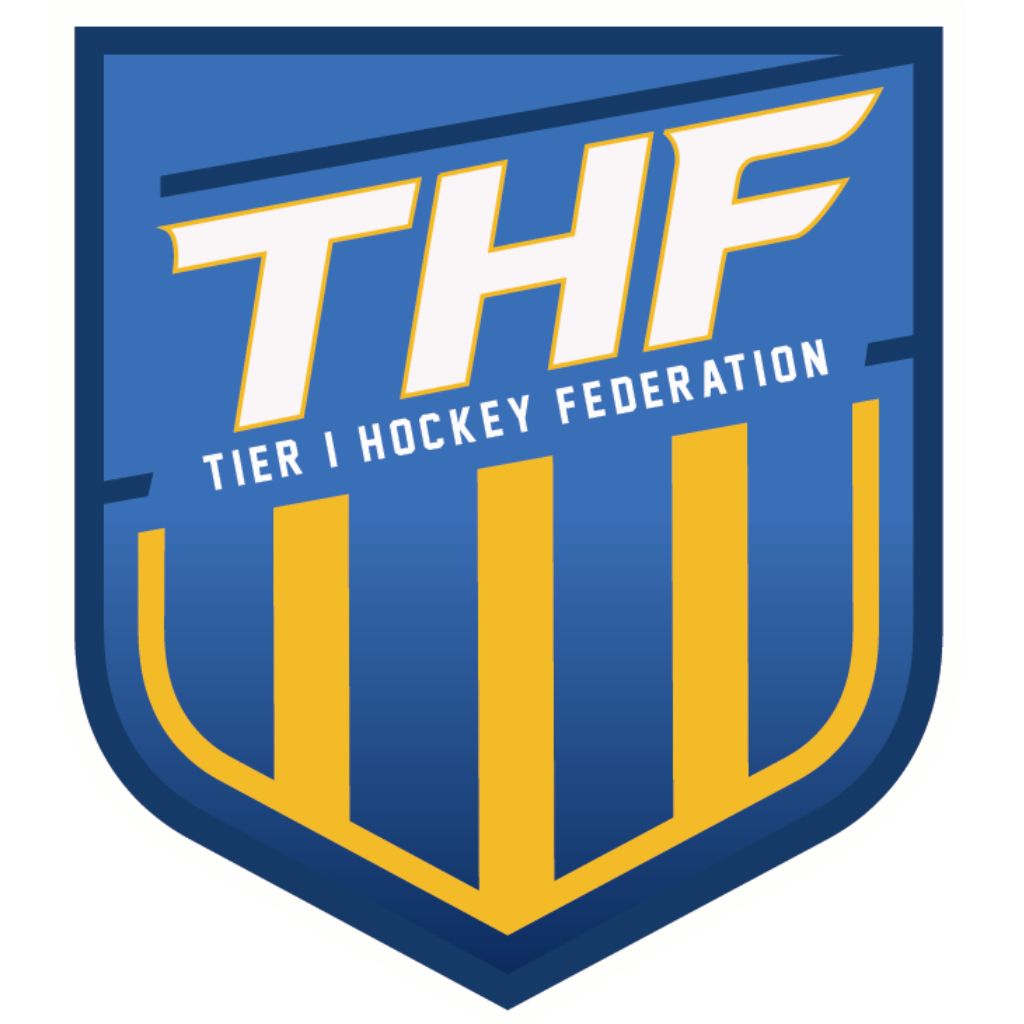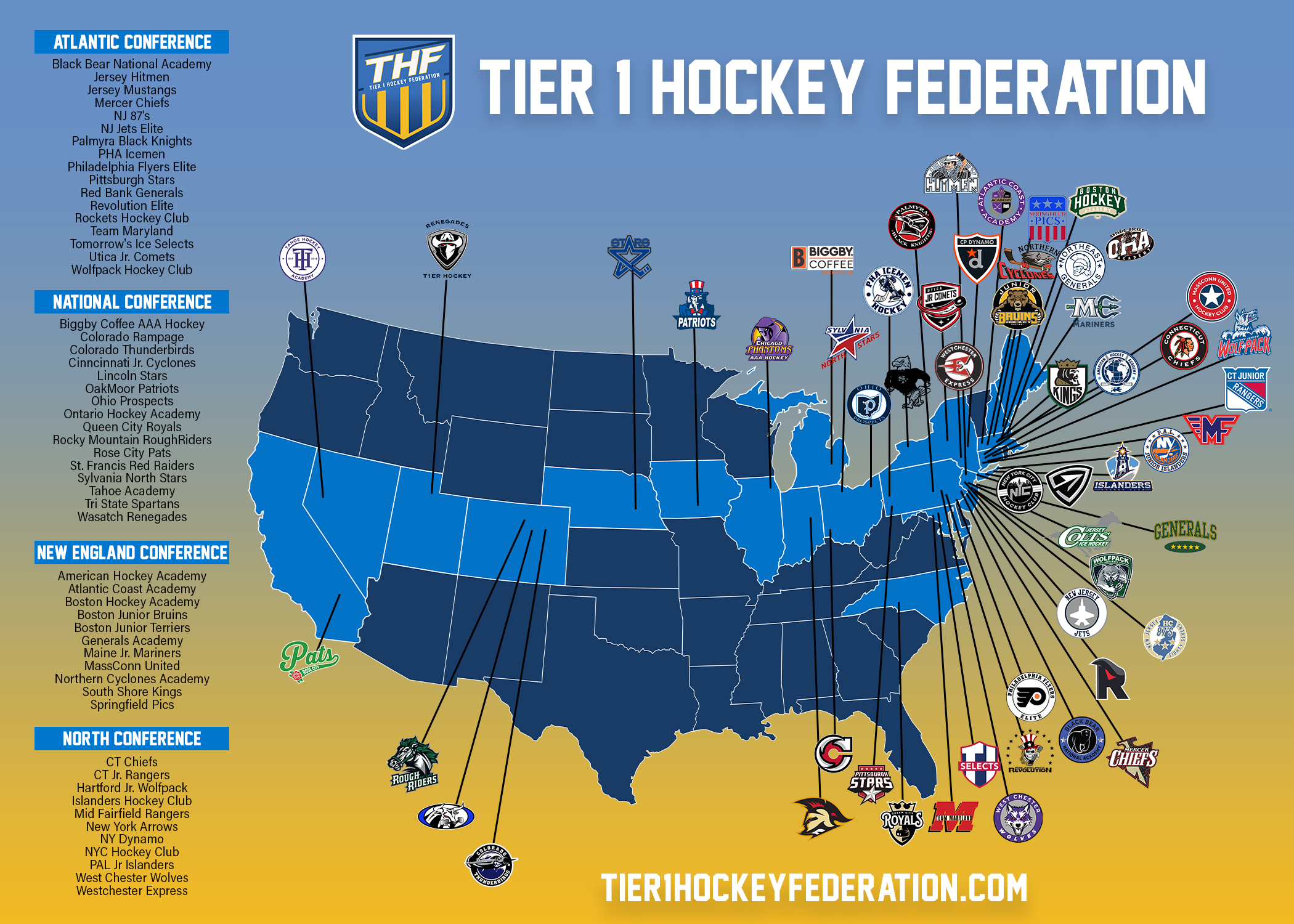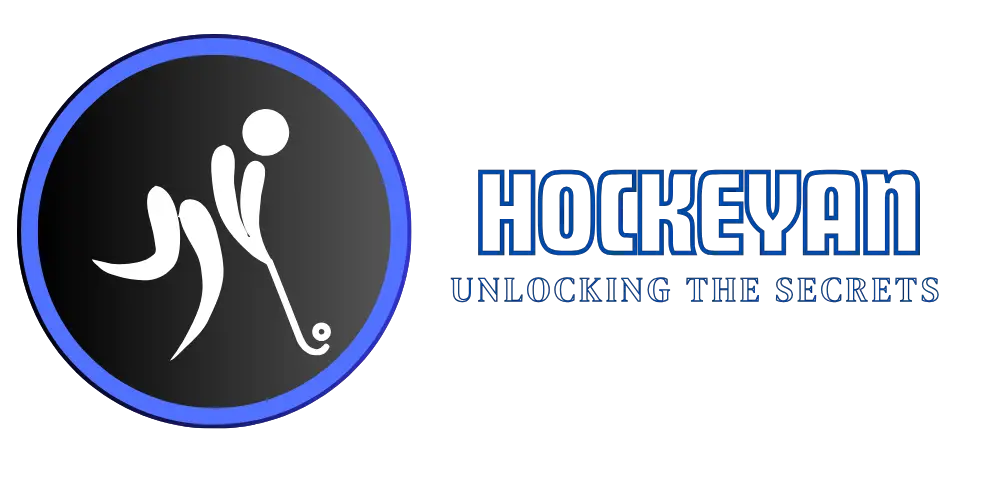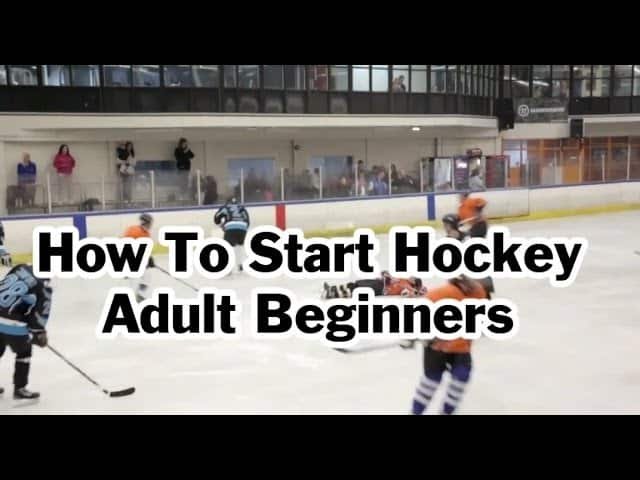Hockey is a thrilling and fast-paced sport. It’s popular worldwide and attracts millions of fans.
Thf Hockey, short for The Hockey Foundation, is an organization dedicated to promoting hockey. They aim to make the sport accessible to everyone, regardless of age or skill level. Thf Hockey provides resources, training, and support to budding hockey players.
They focus on community engagement and development. Their mission is to spread the love of hockey and foster a sense of teamwork and discipline. By offering various programs and initiatives, Thf Hockey helps individuals grow both on and off the ice. Whether you’re a beginner or an experienced player, Thf Hockey has something to offer. Dive into the world of Thf Hockey and discover how they are making a difference in the hockey community.

Credit: www.facebook.com
Physical Conditioning
Physical conditioning is the backbone of any successful hockey player. It’s not just about skating fast or shooting hard. It’s about building the body to withstand the rigors of the game. Let’s dive into two crucial aspects of physical conditioning for hockey players: strength training and endurance training.
Strength Training
Strength training is essential for hockey players. It helps build muscle, increase power, and reduce injury risks. You need a strong core, legs, and upper body to perform at your best on the ice.
Consider adding exercises like squats, deadlifts, and bench presses to your routine. These compound movements target multiple muscle groups, making your workouts more efficient. Don’t forget to include core exercises like planks and Russian twists to enhance stability.
Strength training isn’t just about lifting heavy weights. It’s about lifting with proper form. Take the time to learn the correct techniques to avoid injuries. You might even consider working with a trainer to get started.
Endurance Training
Endurance training is just as important as strength training. Hockey games are fast-paced and require players to maintain high energy levels throughout. You can’t afford to be gassed out by the second period.
Incorporate activities like running, cycling, or swimming into your routine. These exercises improve cardiovascular health and increase stamina. Interval training, which alternates between high-intensity and low-intensity exercise, can be particularly effective.
Don’t overlook the importance of on-ice endurance drills. Practice skating laps, sprints, and simulated game scenarios. This will help your body adapt to the specific demands of hockey.
How do you balance strength and endurance training in your routine? Finding the right mix is key to becoming a well-rounded hockey player. Try different approaches and see what works best for you.
Mental Preparation
Mental preparation is a crucial aspect of excelling in THF Hockey. Preparing your mind can be as important as physical training. Mental toughness helps you stay focused, calm, and ready for whatever comes your way during a game.
Visualization Techniques
Visualization techniques can significantly boost your performance. Picture yourself executing perfect plays, making those game-winning shots, or defending like a pro. This mental rehearsal helps your mind and body sync up.
Imagine the roar of the crowd and the feel of the ice. This sensory detail can make your visualizations even more effective. The more vivid your mental images, the better you’ll perform.
I remember my coach advising me to visualize the puck sliding smoothly into the net. It felt silly at first, but it worked. Visualization can turn your practice into a powerful performance tool.
Goal Setting
Setting clear, achievable goals is key to your mental preparation. Define what you want to achieve in each game or practice. Your goals should be specific, measurable, and time-bound.
Write your goals down and review them regularly. This keeps you focused and motivated. You might aim to improve your speed, accuracy, or teamwork.
Years ago, I set a goal to improve my slap shot. I tracked my progress and celebrated small wins. This kept me motivated and committed.
What are your goals for your next game? How will you measure your success?
Remember, mental preparation is just as critical as physical training. Visualization and goal setting can make a big difference in your performance. Prepare your mind, and the results will follow.
Nutrition
Proper nutrition is vital for Thf Hockey players to maintain energy levels and enhance performance on the ice. Eating balanced meals ensures they stay strong and recover quickly after games.
Nutrition is a crucial part of any athlete’s performance, and hockey players are no exception. Eating the right foods at the right times can give you an edge over your competition. Let’s dig into some key aspects of nutrition that can help you excel on the ice.Pre-game Meals
A balanced pre-game meal is essential. It should provide energy without making you feel sluggish. Focus on a mix of carbohydrates, proteins, and a bit of fat. For example, a meal of grilled chicken, brown rice, and steamed vegetables works well. The chicken provides protein for muscle repair, the rice gives you lasting energy, and the vegetables offer essential vitamins and minerals. Don’t try new foods on game day. Stick to what you know your body handles well.Hydration
Staying hydrated is just as important as eating well. Water is your best friend. Aim to drink at least half a gallon of water on game day. Electrolytes are also critical, especially if you sweat heavily. Sports drinks can help, but watch out for high sugar content. You can also consider coconut water for a natural alternative. Pay attention to your body’s signals. Thirst is a late indicator of dehydration, so drink regularly throughout the day. — Nutrition is not just about what you eat and drink; it’s about timing and knowing what works for your body. Have you ever noticed a difference in your performance based on your pre-game meal?
Credit: www.tier1hockeyfederation.com
Skill Development
Skill development is the backbone of any hockey player’s journey. It’s the difference between skating aimlessly and executing a perfect play. Whether you’re a beginner or looking to refine your skills, focusing on key aspects like stick handling and skating can elevate your game significantly.
Stick Handling
Stick handling is more than just moving the puck around. It’s about control, precision, and creating opportunities. One effective drill you can try is the figure-eight around cones. This will not only improve your control but also your ability to change directions swiftly.
I remember struggling with stick handling in my early days. My coach suggested practicing with a golf ball to improve my dexterity. It was tough initially, but the improvement was noticeable in just a few weeks. Have you tried switching up your practice tools?
Consistency is key. Spend at least 10 minutes daily focusing on stick handling drills. Your confidence on the ice will grow, and you’ll find yourself making plays you once thought were impossible.
Skating Skills
Skating is the foundation of hockey. Mastering it can give you a significant edge over your opponents. Start with the basics: forward and backward skating. Once you’re comfortable, add in crossovers and quick stops.
One tip that helped me was focusing on my stride. Instead of long, powerful strides, I practiced quick, short bursts. This improved my agility and speed. What’s your biggest challenge with skating?
Remember, balance and body positioning are crucial. Keep your knees bent and weight centered. This will enhance your stability and control. Practice these skills regularly, and you’ll see a noticeable improvement in your overall performance.
Skill development in hockey requires dedication and consistent effort. By honing your stick handling and skating skills, you set a strong foundation for becoming a better player. So, what are you waiting for? Hit the rink and start practicing!
Game Strategy
Mastering game strategy in hockey is essential for any team aiming for victory. It involves a mix of offensive and defensive tactics that can turn the tide of the game. Let’s break down these strategies to help you understand how to improve your play on the ice.
Offensive Tactics
Effective offensive tactics are crucial for outsmarting the opposing team’s defense and scoring goals. One key tactic is to maintain puck possession. By keeping control of the puck, your team can create more scoring opportunities.
Another vital tactic is quick passes. Short, fast passes can confuse the defense and open up space for your teammates. Practice passing drills to enhance this skill.
Positioning is also important. Always be aware of your position relative to the puck and your teammates. Good positioning can lead to better shot opportunities and fewer turnovers.
I remember a game where our team was struggling to score. We changed our approach and focused on quick passes and better positioning. The result? We broke through the defense and scored the winning goal. What changes can you make to your offensive tactics?
Defensive Tactics
Strong defensive tactics are the backbone of any successful hockey team. One crucial tactic is zone defense. Each player is responsible for covering a specific area, making it harder for the opposing team to find open spaces.
Blocking shots is another essential tactic. By getting in front of the puck, you can prevent it from reaching the net. It’s not just the goalie’s job—everyone should be ready to block shots.
Communication is key in defense. Make sure you and your teammates are talking and letting each other know where the opponents are. This coordination can make your defense more effective.
During one intense match, our team improved communication and blocked several crucial shots. It made a significant difference, and we held our lead. How can your team enhance communication on the ice?
By focusing on these offensive and defensive tactics, you can elevate your game and increase your chances of victory. What will you try in your next match to improve your strategy?
Recovery
Recovery is essential in hockey to maintain peak performance. Players need to give their bodies time to heal and rebuild. Proper recovery helps in staying strong and preventing injuries. Let’s explore key aspects of recovery: Rest Days and Injury Prevention.
Rest Days
Rest days are vital for hockey players. They allow muscles to repair. Without rest, fatigue sets in quickly. Players should schedule regular rest days. This helps in maintaining energy levels and focus. Rest days also reduce the risk of overtraining. Quality rest leads to better performance on the ice.
Injury Prevention
Injury prevention is crucial in hockey. Proper warm-ups can prevent strains. Stretching helps keep muscles flexible. Wearing the right gear is also essential. Helmets, pads, and guards protect against impacts. Players should also work on strengthening exercises. Strong muscles support joints and reduce injury risks. Paying attention to body signals can prevent minor issues from becoming major injuries.
Team Dynamics
Team dynamics in Thf Hockey highlight the importance of cooperation. Each player’s role is crucial for overall success. Strong communication and trust among teammates lead to winning strategies.
In hockey, team dynamics play a crucial role in determining the success of the team. It’s not just about having skilled players; how they work together can make or break their performance. Understanding the importance of communication and leadership within the team can elevate their game significantly.Communication
Effective communication is the backbone of any successful hockey team. Players must constantly talk to each other on the ice. Simple phrases like “I’m open” or “Behind you” can make a big difference. Off the ice, open lines of communication help build trust and camaraderie. Regular team meetings and honest discussions about strategies and performance can clear any misunderstandings. Remember, a team that communicates well plays well. In my experience, being upfront with teammates about expectations and roles always led to better coordination. Have you noticed how your performance improves when everyone is on the same page?Leadership
Leadership within a hockey team doesn’t just come from the coach. Captains and even seasoned players often take on leadership roles. These individuals set the tone for the team. A good leader leads by example. They show up early, work hard, and maintain a positive attitude. This kind of behavior is contagious and can inspire the entire team to step up their game. Consider how influential a strong leader can be. Who on your team inspires you to push harder and aim higher? In summary, team dynamics, especially through effective communication and strong leadership, are fundamental to a hockey team’s success. By focusing on these aspects, teams can build stronger, more cohesive units ready to face any challenge on the ice.Performance Analysis
Understanding player performance in THF Hockey isn’t just about watching the game. It involves breaking down every move, analyzing statistics, and reviewing videos. This approach helps coaches and players make informed decisions to improve their game.
Video Review
Video review offers a clear perspective on player performance. By re-watching game footage, you can identify strengths and weaknesses. Did you ever notice how some players always seem to be in the right place at the right time? Video analysis can reveal why.
Consider using slow-motion playback to study key moments. You can see the precision in a pass or the timing of a shot. It’s like having a magnifying glass on the action.
Have you ever thought about how your positioning affects your gameplay? Reviewing your own footage can provide eye-opening insights. It’s not just about what you did right but also about what you can do better.
Statistics
Statistics provide a data-driven look at performance. Numbers don’t lie. They can show trends and patterns that might not be obvious during a fast-paced game.
Tracking stats like shots on goal, assists, and face-off wins can highlight areas for improvement. For example, if your face-off win rate is low, it might be time to practice that skill more intensively.
Do you keep track of your shooting percentage? Knowing this can help you focus on increasing your accuracy. Imagine knowing exactly how often your shots hit the target compared to how often they miss.
Consider creating a table to track key statistics over time. This can help visualize progress and pinpoint specific areas that need attention. Here’s a simple example:
| Game | Shots on Goal | Assists | Face-off Wins |
|---|---|---|---|
| Game 1 | 5 | 2 | 8 |
| Game 2 | 7 | 1 | 10 |
Engage with these tools to unlock your full potential. Video reviews and statistics are not just for coaches. They’re for anyone serious about improving their game. What will your next game look like after applying these insights?

Credit: blackbearsportsgroup.com
Frequently Asked Questions
What Is Thf Hockey?
THF Hockey stands for The Hockey Foundation. It aims to promote hockey and support youth development through the sport.
How Does Thf Hockey Help Youth?
THF Hockey provides training programs, mentorship, and resources. This helps young players develop skills and grow in the sport.
Who Can Join Thf Hockey Programs?
Anyone passionate about hockey can join. THF Hockey welcomes players of all skill levels and ages.
Where Are Thf Hockey Programs Held?
THF Hockey programs are held at various locations. They have partnerships with local rinks and communities.
Conclusion
Hockey offers thrill and excitement to fans and players alike. This sport brings communities together, fostering teamwork and camaraderie. Watching or playing hockey keeps you active and engaged. The fast pace and skillful play captivate audiences worldwide. Dive into the world of hockey and experience its unique charm.
Keep exploring the sport, and enjoy every moment on and off the ice. Hockey’s impact on life and culture is undeniable. Embrace the passion and energy of this beloved sport.



